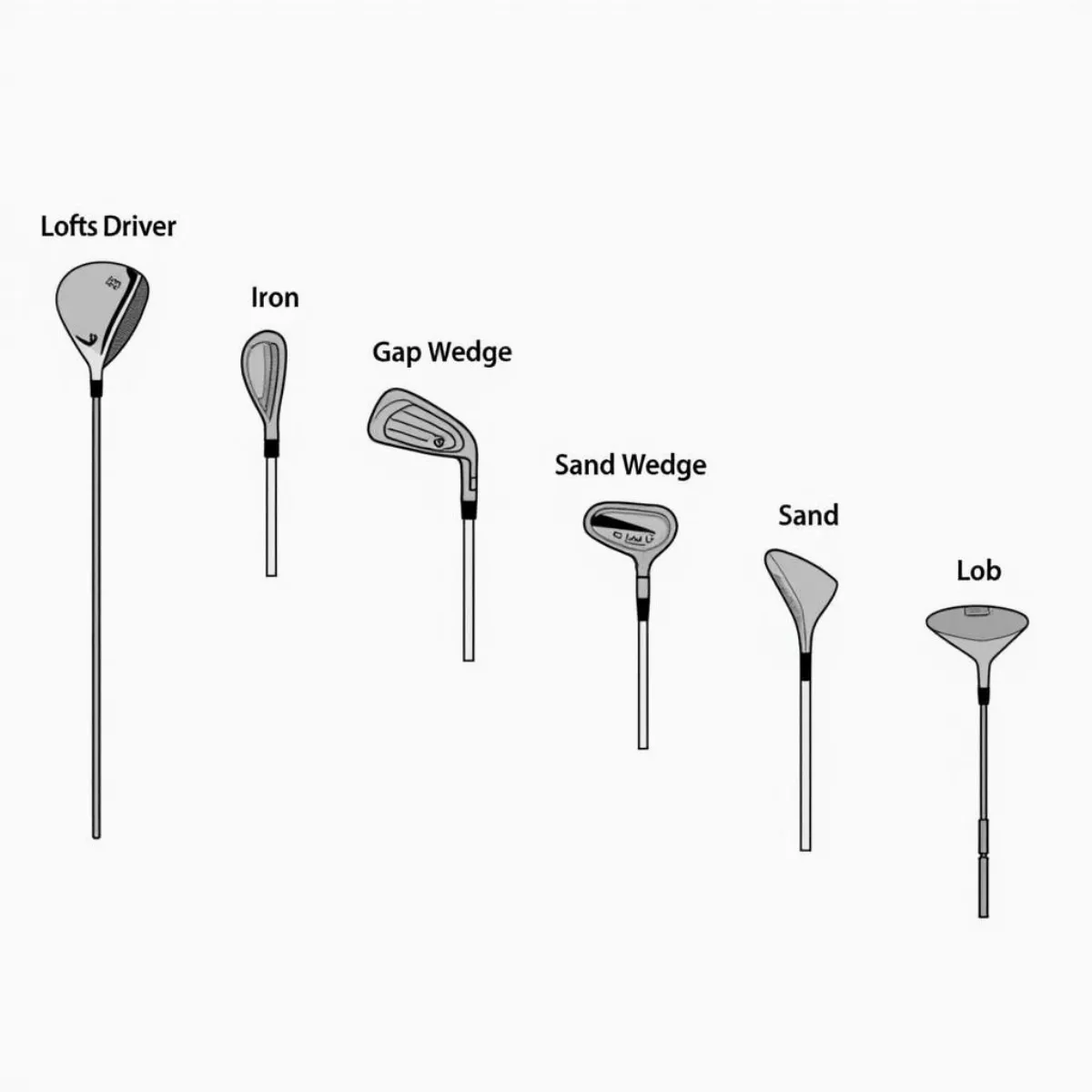When stepping onto the golf course, understanding your golf clubs is crucial for achieving better performance. Among these, the gap wedge holds a special place. Yet, many golfers—novices and seasoned players alike—often find themselves wondering: what is the loft of a gap wedge, and why does it matter? Don’t worry; you’re in the right place. This guide will provide a detailed exploration of the loft of a gap wedge and its impact on your game.
Understanding the Gap Wedge
First, let’s define what a gap wedge is. The gap wedge is typically used for shots that require precision, falling between the pitching wedge and the sand wedge in loft and function. Generally, it has a loft ranging between 50 to 54 degrees. This makes it the perfect choice for shorter, controlled shots.
Why is Loft Important?
Loft refers to the angle of the clubface relative to the ground. The higher the loft, the higher the ball will rise off the ground. Here are a few reasons why understanding loft is important:
- Distance Control: Each degree of loft impacts the distance the ball travels. Knowing how far you can hit with your gap wedge can save strokes.
- Trajectory: Loft influences the trajectory of your shots. A higher loft will send the ball higher into the air, which can help with certain lies.
- Spin: The loft also affects the spin of the golf ball. A gapping wedge with more loft can generate more backspin, allowing for more control on the green.
 Golf Club Loft Comparison
Golf Club Loft Comparison
The Loft Range of Gap Wedges
As mentioned earlier, the loft of a gap wedge typically falls between 50 to 54 degrees. Here’s a quick reference table:
| Wedge Type | Loft Range (degrees) |
|---|---|
| Pitching Wedge | 44 to 48 |
| Gap Wedge | 50 to 54 |
| Sand Wedge | 54 to 58 |
| Lob Wedge | 58 to 64 |
This table serves as a quick reference to help you understand where the gap wedge fits into your wedge arsenal.
Choosing the Right Loft
When selecting a gap wedge, consider your swing speed, accuracy, and the specific courses you typically play. Here are a few points to guide your decision:
- Swing Speed: Faster swing speeds typically benefit from lower-loft clubs. If you have a slower swing, you may want to lean toward a higher-loft gap wedge.
- Short Game Needs: Think about your playing style. Do you often find yourself in tricky lies needing delicate touch shots? A higher-lofted gap wedge may suit you better.
- Set Composition: Your existing clubs should influence your decision. If your pitching wedge has a loft of 44 degrees and your sand wedge is 56 degrees, a 50 or 52-degree gap wedge might be ideal.
 Golfer Choosing Gap Wedge
Golfer Choosing Gap Wedge
Gap Wedge Techniques
Now that you have a better understanding of loft and how to choose a gap wedge, let’s explore some techniques for utilizing this versatile club.
-
Pitch Shots
- Club to use: Gap wedge
- Ideal distance: 40 to 100 yards
- Technique: Maintain a smooth, controlled swing to get the ball in the air quickly.
-
Approach Shots
- Club to use: Gap wedge
- Ideal distance: When you’re just outside pitching range
- Technique: Focus on accuracy and trajectory rather than raw power.
-
Bump and Run
- Club to use: Gap wedge or pitching wedge
- Ideal distance: 20 to 50 yards
- Technique: Keep your follow-through shorter for low, rolling shots.
 Golfer Executing Pitch Shot
Golfer Executing Pitch Shot
FAQs About the Loft of a Gap Wedge
Here are some frequently asked questions to further clarify the concept of loft and the functionality of a gap wedge.
1. What loft should I choose for my gap wedge?
The typical loft ranges from 50 to 54 degrees, allowing golfers to choose based on their individual swings and preferences.
2. Can a gap wedge be used for chipping?
Absolutely! Gap wedges are great for chip shots due to their loft, as they can help get the ball over obstacles while allowing for controlled distance.
3. How does the gap wedge fit into my overall set?
The gap wedge fills the distance between your pitching and sand wedges, enabling better control and precision for various course conditions.
4. Should I get a gap wedge with more or less loft?
This depends on your playing style. If you often find yourself in wet or tricky lies, a higher loft might be beneficial. In contrast, if you have a faster swing, a lower loft could add more distance.
5. Can I replace my pitching wedge with a gap wedge?
It’s not advisable to completely replace your pitching wedge. Instead, consider integrating the gap wedge into your bag for better versatility.
6. How to practice with a gap wedge?
Focus on different types of shots, including pitches, chips, and bump-and-runs. Use a practice green to get familiar with various distances and trajectories.
7. Is the gap wedge useful for golfing beginners?
Yes! The gap wedge can significantly aid beginners in developing their short game, allowing for more precision around the greens.
8. What is the best gap wedge for high handicappers?
A more forgiving gap wedge with a larger hitting area and a moderate loft (52 degrees) can help high handicappers better control their shots.
9. Can the loft of a gap wedge be adjusted?
Many modern golf clubs allow for loft and lie adjustments. Consult your club fitter to ensure your clubs meet your needs.
10. Do all manufacturers have the same loft specifications?
No, different manufacturers may have variations. Always check the specs for the particular brand and model before purchase.
Key Takeaways
- The loft of a gap wedge typically ranges from 50 to 54 degrees, positioning it between the pitching and sand wedges.
- Understanding loft is key to mastering your distance control, trajectory, and spin.
- Consider factors like swing speed, accuracy, and course conditions when choosing your gap wedge’s loft.
- The gap wedge is versatile; it can be used for various shots, including pitches, chips, and approach shots.
- Practice consistently with your gap wedge to enhance your short game effectiveness.
In conclusion, mastering your gap wedge’s loft can significantly improve your golf game. By integrating it properly into your club set and adhering to the mentioned techniques, you can lower your scores and feel more confident on the green. Don’t underestimate the impact this simple, yet essential club can have on your performance! Happy golfing!

